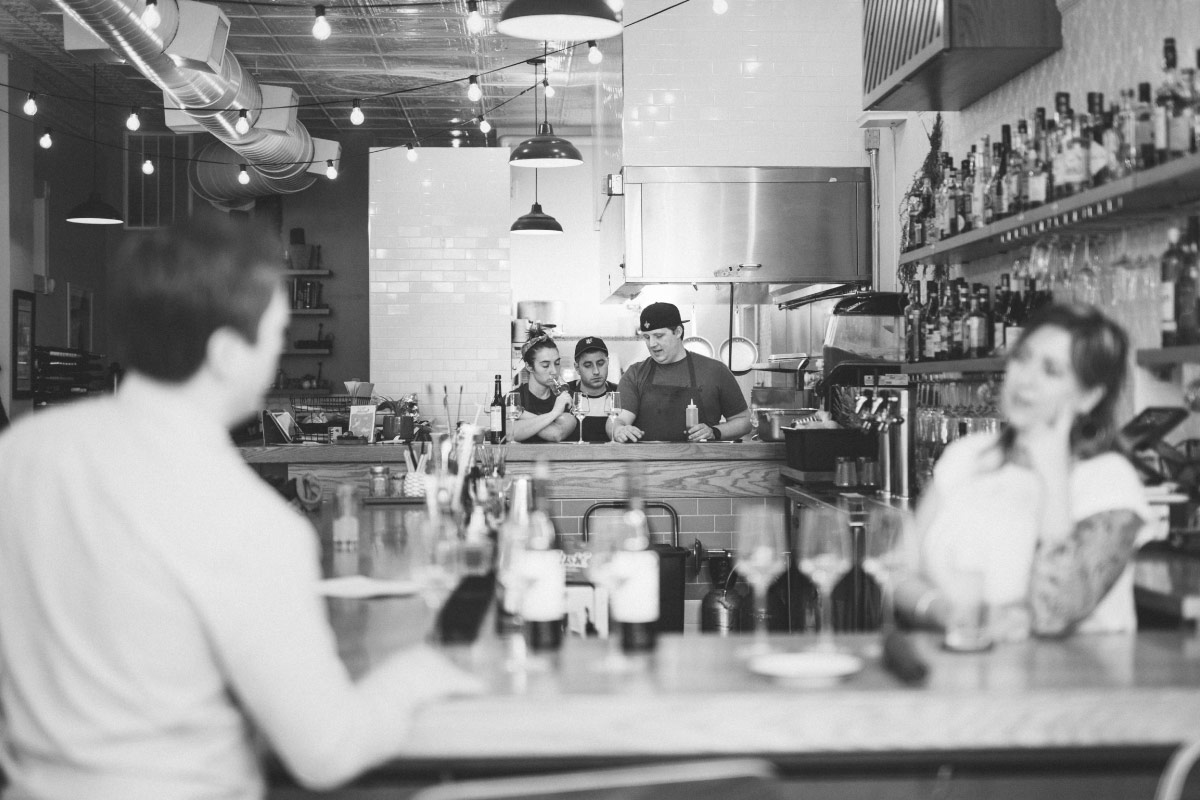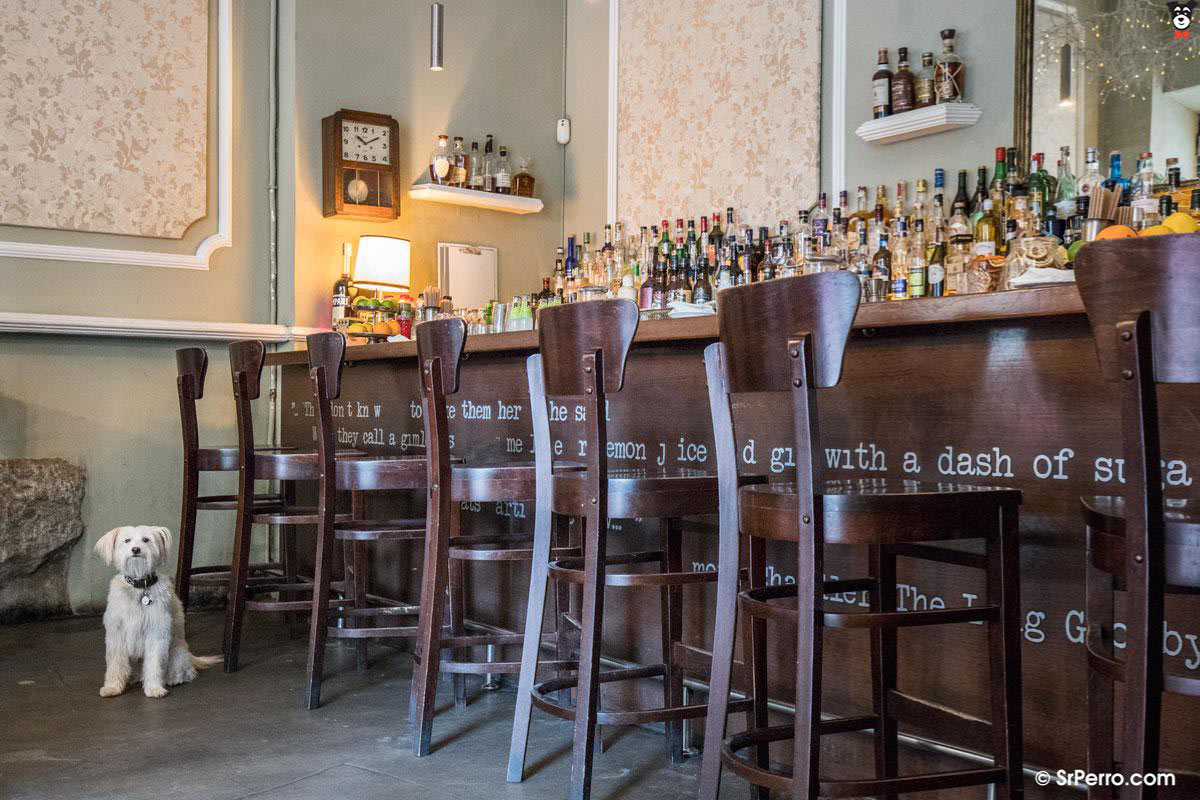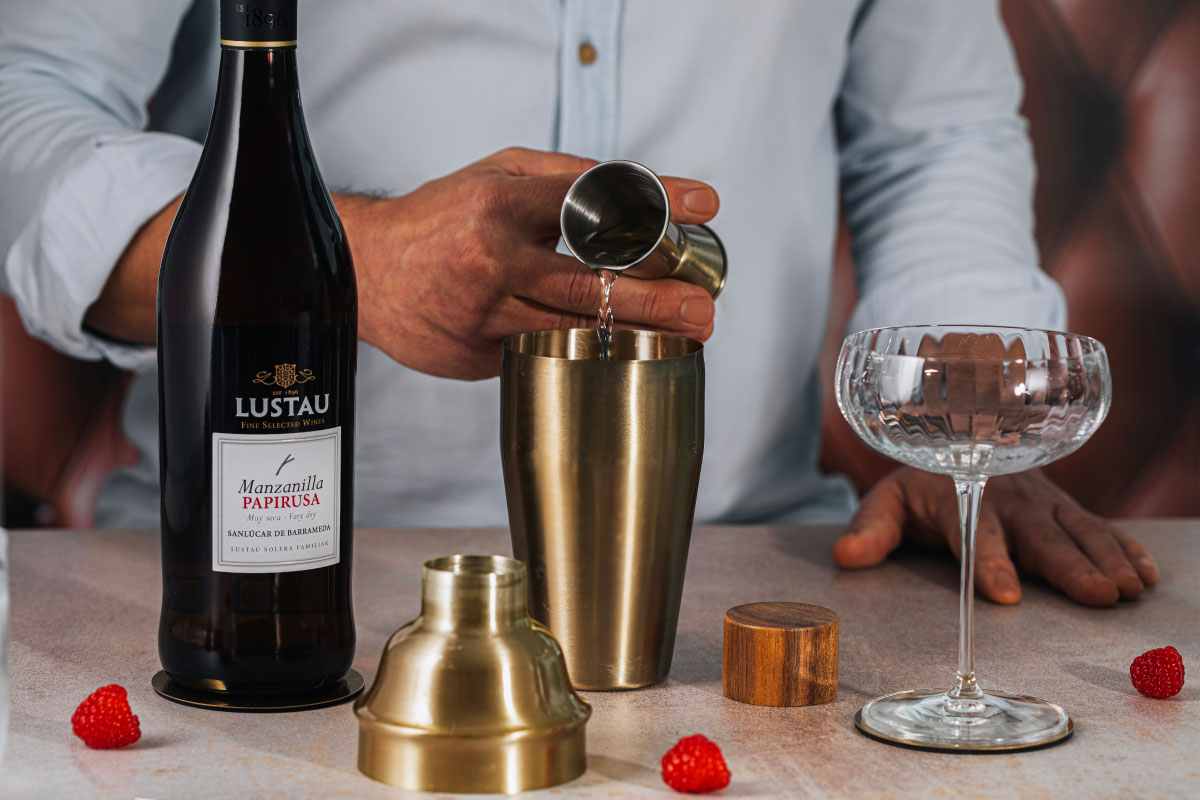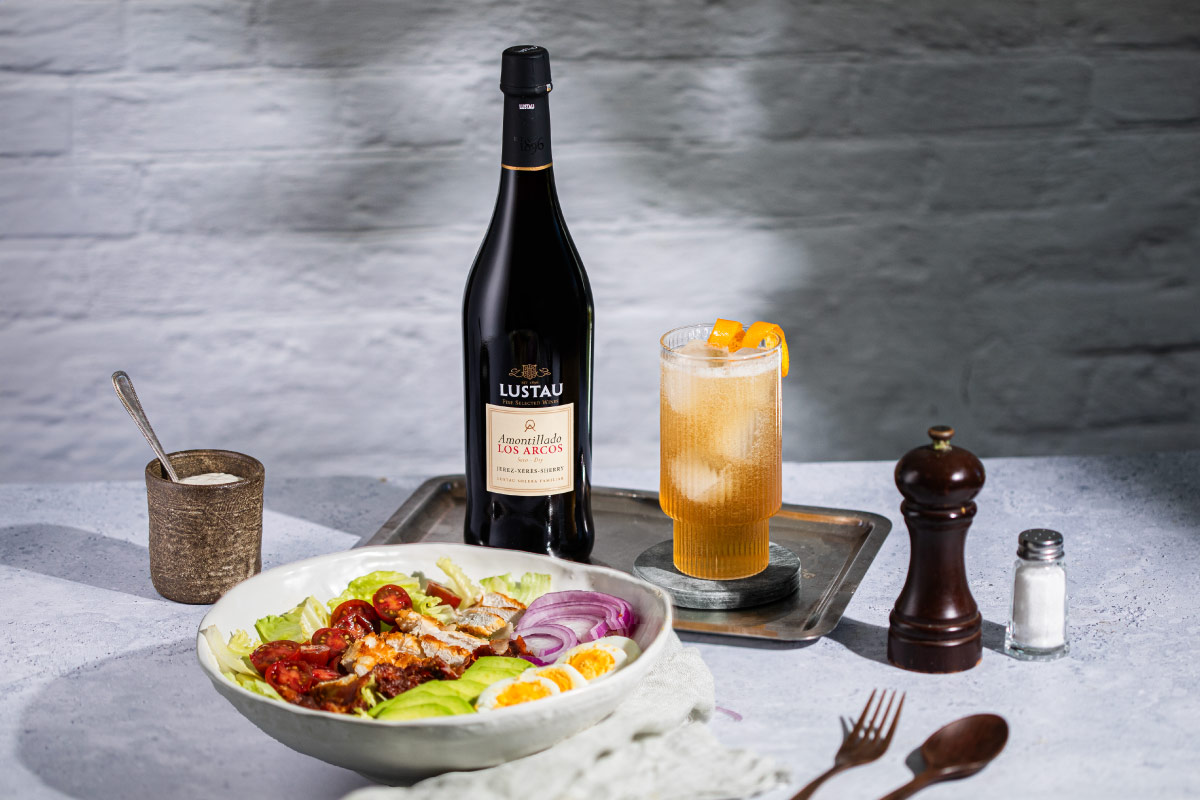In the past decade—especially post-COVID—cocktail bars have quietly evolved. No longer just about well-made drinks, many now offer curated culinary experiences. Across the U.S. and Europe, more bars are serving food menus designed to complement their cocktails, often in collaboration with chefs.
A pioneer in this shift is The Aviary in Chicago, created by the team behind Alinea. Known for its innovative, fine-dining approach to cocktails—using cryogenic infusions, custom glassware, and edible garnishes—The Aviary redefined how drinks are served. Their tasting menus blur the line between kitchen and bar, proving cocktails can carry the same weight as cuisine.
The trend is backed by official data: in 2023, U.S. bar food purchases rose 14.8%, per the USDA—over double the growth of a decade ago. This points to a rising demand for integrated, elevated experiences. From small plates to full tasting menus, bars embracing food are becoming true destinations for flavor, creativity, and hospitality.

RETHINKING HOSPITALITY: PAIRING FOOD AND COCKTAILS AS A SHARED LANGUAGE
Cocktail bars are no longer just about what’s in the glass—they’re about the total guest experience. As chefs and bartenders increasingly work side by side, a new hospitality language is taking shape, one where food and drink are thoughtfully designed to complement each other and enrich the overall narrative. This philosophy reimagines the bar not simply as a place to enjoy cocktails, but as a canvas for multi-sensory storytelling—where flavor, aroma, and presentation converge to create a memorable encounter that lingers long after the last sip.
THE SYNERGY BETWEEN BAR AND KITCHEN
Great pairings come from collaboration—not isolation. When bartenders understand a dish’s ingredients or seasonality, they can create cocktails that complement or contrast in unexpected ways. Likewise, chefs who know a spirit’s profile can tweak seasoning, texture, or fat to enhance the drink.
This synergy isn’t accidental—it takes trust, timing, and a shared vision. When it works, cocktails and dishes become part of the same story, each elevating the other.
CREATING CULINARY CONCEPTS THAT MATCH COCKTAIL IDENTITY
Bars that take food seriously aren’t just adding tapas to fill space—they’re building culinary concepts that reflect their drink-making ethos. A smoky mezcal cocktail might find its counterpart in a flame-kissed pork rib. A botanical sherry highball could sing beside a herbaceous ceviche. The pairing isn’t simply about matching flavor to flavor—it’s about expressing the DNA of the bar across multiple sensory touchpoints.
When the food and cocktails are born of the same philosophy, the whole experience becomes more coherent—and far more memorable.
HOW LOCAL INFLUENCE SHAPES THE MENU
Also, context matters. In cities like Los Angeles or New York, guests may expect globally inspired pairings and theatrical flair. In Barcelona or Madrid, seasonality, simplicity, and product quality often take precedence. Even the time of day plays a role. Alberto from 1862 Dry Bar in Madrid observed that post-COVID, patrons began arriving earlier, seeking more substance during aperitivo hours. This prompted him to introduce weekend tasting menus in collaboration with guest chefs—carefully paired with cocktails designed for that moment and mood.
Local habits, weather patterns, and community preferences all inform how bars approach pairing. As more cocktail venues tap into their neighborhoods and culinary traditions, they find new ways to connect authentically—with guests and with place.
REAL-WORLD INSPIRATION: SUNDAY TASTINGS AT 1862 DRY BAR, MADRID
In Madrid’s vibrant cocktail scene, few places embody thoughtful hospitality quite like 1862 Dry Bar, helmed by veteran bartender Alberto Martínez. Since opening in 2012, Alberto has upheld a philosophy rooted in excellence, restraint, and timeless technique—choosing not to serve food on a regular basis in order to focus entirely on cocktails crafted to the highest standard.

Image by www.srperro.com
But post-pandemic shifts in guest behavior—particularly the growing appeal of daytime drinking and longer, more intentional visits—prompted him to rethink one piece of the formula. The result was a novel concept: guest chef Sunday tasting menus, held during aperitivo hours and built around a curated cocktail pairing experience.
“This idea came from a need to activate an earlier service on Saturdays and Sundays—something I personally love—but we hadn’t found a formula that really worked,” Alberto explains. “These events function like a three-way collaboration: we need a chef who’s genuinely excited to participate, a brand that sponsors the food costs, and a menu attractive to guests.”
Each Sunday session features a three-course menu created by a guest chef—ranging from Michelin-starred talent to humble neighborhood gems—paired with three original cocktails designed by Alberto, often inspired by or adapted to the chef’s concept. Brands like Lustau, for instance, have supported these events during Sherry Week, lending their wines as thematic anchors for both the drinks and the dishes.
“We don’t aim for perfect, ingredient-by-ingredient pairings,” Alberto clarifies. “The goal is a journey of sensations. Sometimes we haven’t even tasted the full menu ahead of time. But we always talk to the chef to understand each dish, and ask: ‘What kind of cocktail do you imagine enhancing this? Something citrusy? Bitter? Powerful or refreshing?’ It’s the same kind of conversation we have with guests at the bar.”
The results are intimate, joyful, and consistently well received. The bar hosts around 30 of these collaborations each year, usually filling their 34–40 person capacity with regulars who may not even visit during normal evening hours. And while each pairing is unique, they’re united by a spirit of mutual respect and creative alignment.
“The best collaborations are with chefs who are truly excited to come,” Alberto notes. “That could mean a chef who’s a friend of ours, or someone with strong ties to the brand we’re featuring. The synergy between both offers has to feel natural.”
Not only has the series attracted new audiences, it’s also elevated 1862’s profile within Madrid’s broader gastronomic community. The bar was named Best Cocktail Bar in Madrid by the city’s Gastronomy Academy—a nod to the impact of this thoughtful programming.
From duck meat balls by Kuoco to tripe “callos a la Madrileña” from Saddle, and even a Japanese tasting menu featuring Jerez wines in every dish by Okonomi San, the range has been remarkable. But what unites these events is the clarity of vision: food and cocktails that respect one another, surprise the guest, and leave a lasting impression.

Alberto Martínez, founder of 1862 Dry Bar.
Here is the actual menu from the event with David de la Torre from Okonomi San and Lustau:
Primer Paso (First Course):
Hokkaido Red Prawn Canapé, Cheese and Miso Cream, Green Shiso Oil.
Paired with: Lustau Amontillado Escuadrilla, Vermut Lustau Dry, Maraschino, Orange Bitters
Segundo Paso (Second Course):
Black Angus and Pork Menchi Croquette, Egg Tartar, Chilli Namasu Vinaigrette.
Paired with: Black sesame infused Vermut Lustau Rojo , Campari and Bourbon.
Tercer Paso (Third Course):
Free-Range Chicken Thigh Stew, Tomato and Miso Umami Sauce Reduced with Oloroso, Rustic Bread Crust.
Paired with: Lustau Fino Jarana, Elderflower Liqueur, Ginger Beer
THE FUNDAMENTALS OF FOOD AND COCKTAIL PAIRING
Pairing food with cocktails it’s about orchestrating balance across intensity, texture, acidity, and aroma. The best combinations hinge on understanding the structural elements of both the dish and the drink and using contrast or harmony to enhance each.
A few guiding principles help set the stage:
1. Match Intensity:
A delicate crudo will be overwhelmed by a boozy stirred cocktail, while a rich, fatty dish needs a bold drink to stand up to it. Aligning strength with strength avoids imbalance.
2. Play with Contrast:
Bright citrus-based cocktails (like a Margarita or a Daiquiri) can slice through creamy, fatty, or fried dishes, cleansing the palate and sharpening flavors. Bitterness can counter sweetness, spice can be tempered with sugar or glycerin-rich ingredients, and umami can be amplified by salinity or nutty oxidized notes.
3. Echo Aromatics or Textures:
Mirroring a dish’s flavors in the cocktail—like using smoked elements with grilled meats or herbal spirits with green sauces—can create a bridge between bite and sip. Likewise, silky cocktails can accentuate tender textures, while bubbly or shaken ones lift crispy preparations.
4. Account for Temperature and Refreshment:
Hot dishes and cool cocktails can heighten contrast, but certain flavors are more pronounced at different temperatures. Cold drinks help reset the palate and increase “stay time” at the table.
In the context of sherry cocktails, these principles come alive in especially dynamic ways. A fino or manzanilla base can deliver piercing salinity and freshness to cut through oily dishes. Amontillado or oloroso adds roasted depth, dried fruit notes, and spice for rich meats or earthy vegetables. PX offers natural sweetness that softens spice or enhances desserts.

The same logic applies to Lustau cocktails, where structure, flavor layering, and texture make the sherry base an ideal candidate for culinary pairings. Whether the result is bold or delicate, the key is intention—and a bit of experimentation.
ELEVATING THE GUEST EXPERIENCE: MORE THAN JUST A MEAL
At its best, it transforms a drink into a moment and a menu into a memory.
Satisfaction, Stay Time, and Emotional Impact
When guests are offered an intentional pairing menu, they slow down. They taste more carefully, they ask questions, and they linger longer. Food extends the arc of a cocktail bar visit, anchoring it in pleasure and encouraging guests to stay for a second drink, or even a third. This effect has been confirmed by bartenders across the U.S., as highlighted in this VinePair article, where several noted that curated food offerings increased dwell time and elevated the perceived quality of the entire experience.
On a sensory level, pairing elevates the experience beyond the sum of its parts. When food and cocktails interact thoughtfully, they create a rhythm of contrast and balance that deepens guest enjoyment. It’s not just about flavor—it’s about crafting moments that linger in memory.

Menu Innovation as a Branding Tool
Bars that offer thoughtful food and drink pairings often stand apart from their peers. This isn’t about becoming a restaurant—it’s about crafting a distinct identity. At 1862 Dry Bar, for example, Sunday tasting menus have become a calling card, drawing regulars who return not just for a drink, but for the promise of a fresh culinary collaboration.
As Alberto notes, many guests who don’t visit during the usual evening hours become loyal attendees of these pairing events. This kind of programming builds a brand not through marketing campaigns, but through shared experiences. It tells a story—of curiosity, of creativity, and of a commitment to hospitality that feels personal.
For bars looking to distinguish themselves in an increasingly competitive scene, this kind of innovation can be a powerful tool. It creates a reason to visit, and a reason to return.
SHERRY’S PLACE IN THE MODERN COCKTAIL BAR
Sherry wines are one of the most versatile tools in the modern bartender’s repertoire. Sherry’s broad spectrum of styles offers a palette of aromas, textures, and structures that few other categories can match. Its resurgence isn’t just about flavor—it’s about function.
Sherry serves as both a seasoning and a foundation in cocktail design. Its savory, often umami-rich character brings depth without overwhelming other ingredients. Amontillado can brighten a stirred bourbon cocktail with saline lift; a base of oloroso can anchor a complex sour with toasted warmth; fino or manzanilla can replace gin or vodka itself in a Martini riff for briny elegance and a lower ABV. The best example is the Bamboo.
More importantly, sherry thrives in food-forward settings. It’s a wine that was made to sit alongside a plate. It carries a gastronomic instinct baked into its DNA—shaped by the markets, seafood, and other stunning ingredients and culinary techniques from the South of Spain.
As bars evolve beyond the drink to embrace a fuller culinary identity, sherry answers the call with effortless versatility. It can refresh or round, contrast or complement. It’s a quiet powerhouse with a long memory and a flexible soul.
Bartenders are starting to catch on. According to Alberto at 1862 Dry Bar, “Sherry fits perfectly into events that focus on pairing. It brings both elegance and surprise. We’ve had great success with sherry cocktails paired with everything from Iberian pork to Japanese braises.”
And as sherry regains its footing in top-tier cocktail programs, it’s carving out a new role—not as a curiosity, but as a staple.
WHY LUSTAU SHERRY IS A NATURAL FIT FOR PAIRING MENUS
Few producers embody the balance between history, innovation, and gastronomic intent like Lustau. With a portfolio that spans the full stylistic spectrum—from oceanic personalities like manzanilla to complex, deep oloroso—Lustau offers an unmatched toolkit for building pairing menus that surprise and delight. Each wine is crafted not just for tasting, but for savoring—especially alongside food.
Lustau’s collection also lends itself to layered storytelling. Each sherry—whether a rare Palo Cortado from a single almacenista or a bright, coastal Fino del Puerto—carries with it a tale of terroir, aging, and human touch. These elements give depth to pairing experiences, making them about more than just taste—they become emotional and cultural encounters.
PAIRING INSPIRATION: FOOD MEETS COCKTAIL
The interplay between food and cocktails offers an open canvas for creativity—especially when sherry is involved. Its versatility across styles makes it uniquely positioned to connect with both bold and delicate dishes, while its savory, umami-rich profile complements a wide range of ingredients. Below are a few pairing ideas that showcase how cocktails and food can elevate each other:
Tacos al Pastor & Lustau Sherry Margarita (El Picador)
The smoky sweetness of marinated pork meets its match in the citrusy brightness of this margarita twist made with Manzanilla Papirusa. The wine’s saline edge cuts through the fat, while its subtle flor-derived bitterness enhances the char from the grill. A splash of agave and lime ties it all together, making this a pairing built on contrast, freshness, and vibrant spice.
Cobb Salad with Lustau Amontillado Highball
Duck Meat Balls & Oloroso Old Fashioned
Rich, unctuous “croquetas de pato” need a drink that can match their intensity. A Lustau Oloroso-based Old Fashioned, built with orange bitters and a touch of dark sugar, offers the weight and nutty warmth to stand up to the filling, while its dry finish keeps the pairing from becoming too heavy.
Cured Manchego & East India Cobbler
The tangy, aged character of Manchego cheese harmonizes beautifully with the sweet-savory profile of a Lustau East India Solera Cobbler. Served over crushed ice with a slice of orange and a mint sprig, the drink delivers spice, caramel, and dried fruit notes that echo the cheese’s lactic depth and nuttiness.
Seared Tuna with Sesame & Fino Martini
This clean, umami-driven pairing highlights sherry’s precision. A Fino-based martini—dry, slightly saline, with a whisper of herbal vermouth—elevates the purity of seared tuna, while echoing sesame’s roasted complexity. This combination is elegant, restrained, and deeply satisfying.
Chocolate Tart & PX Espresso Martini
For dessert, Pedro Ximénez adds body and depth to a riff on the classic espresso martini. The wine’s raisin, coffee, and fig notes merge beautifully with bitter chocolate, while its viscosity and sweetness round out the tart’s richness without overwhelming it.
These examples are just a starting point. With the right intention, collaboration, and products, the possibilities for food and cocktail pairings are nearly endless—and sherry, in all its forms, deserves a front-row seat at the table.
As cocktail bars continue to evolve, those that embrace thoughtful food pairings are discovering a powerful way to elevate the guest experience—creating moments that linger long after the last sip. With its depth, versatility, and culinary soul, sherry is poised to play a starring role in this new era—inviting both bartenders and guests to savor not just what’s in the glass, but the full experience around it.







